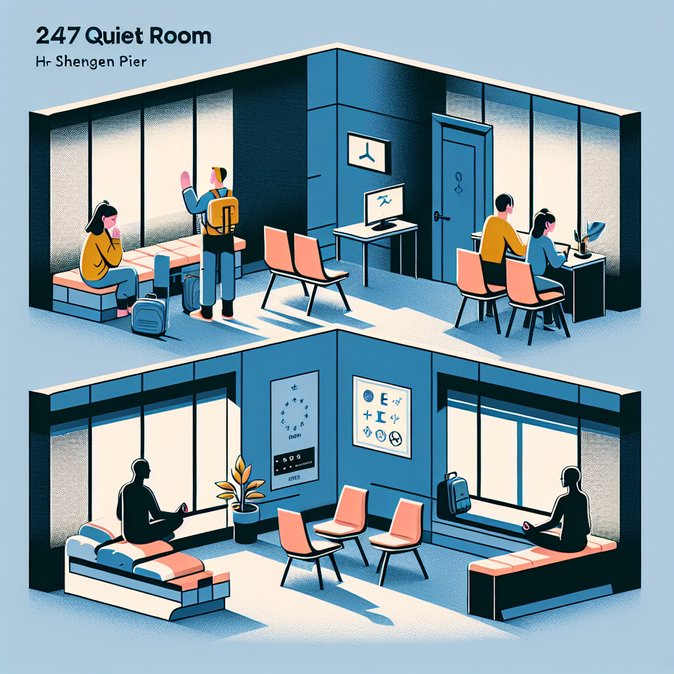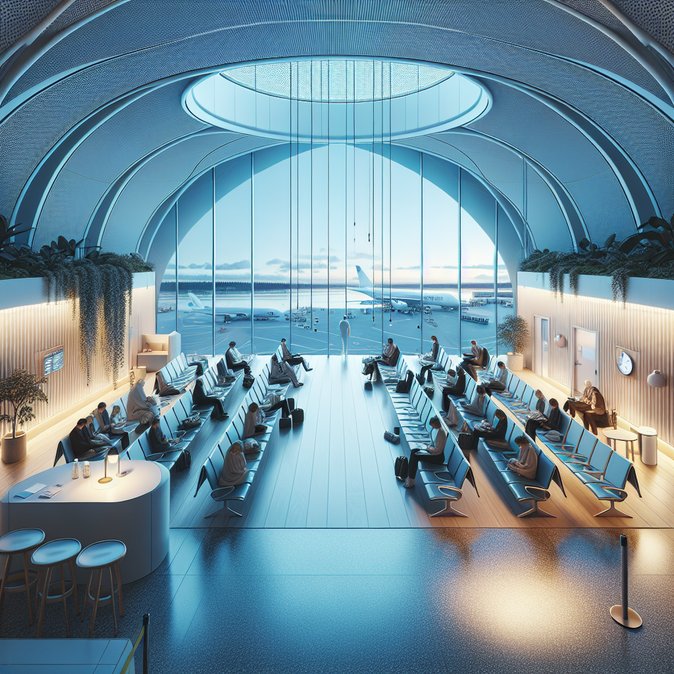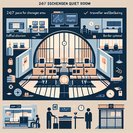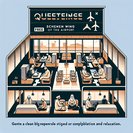
Finavia has quietly rolled out a new wellbeing feature at Helsinki-Vantaa: a round-the-clock Quiet Room located next to Gate 32 in the airport’s Schengen wing. The calming space – an expansion of a 2023 pilot in the non-Schengen area – is open to all passengers for prayer, meditation, silent reflection or simply escaping the bustle of departures. Natural light, acoustic panelling and a Nordic-neutral colour palette create a low-stimulus environment, while the Vantaa parish union provides voluntary chaplaincy support and can even officiate on-the-spot blessings or weddings.
Although the initiative may seem soft, business-mobility specialists see hard benefits. Employee-wellbeing clauses are now baked into most travel-risk frameworks; Helsinki competes with other northern hubs such as Copenhagen and Stockholm for connecting itineraries, and value-added “third spaces” can tip the routing decision when fares are equal. Four sound-insulated work pods will be installed in December so that road-warriors can take confidential calls or fire off last-minute e-mails without heading to a lounge.
![Helsinki Airport Opens 24-Hour Multi-Faith Quiet Room on Schengen Pier]()
The timing is strategic. From 12 October 2025, non-EU nationals transiting the EU will undergo biometric registration under the new Entry/Exit System (EES). Finavia expects EES to lengthen peak-hour queues and wants to give connecting travellers somewhere peaceful to wait without exiting the secure zone. Early-stage data from the non-Schengen prototype showed especially heavy use by Muslim passengers observing fixed prayer times and by long-haul travellers seeking respite before red-eye onward flights.
Corporate mobility teams should update pre-trip information sheets to highlight the amenity, particularly for employees with faith-based requirements or heightened anxiety. Duty-of-care managers may also note that the Quiet Room offers a discreet location for emotional first-aid in the event of disruption – a useful addition given Europe’s increasingly fragile winter operations. Finavia’s move underscores a broader trend: soft-infrastructure investments that support traveller resilience are fast becoming a differentiator in the competition for high-yield traffic.
Although the initiative may seem soft, business-mobility specialists see hard benefits. Employee-wellbeing clauses are now baked into most travel-risk frameworks; Helsinki competes with other northern hubs such as Copenhagen and Stockholm for connecting itineraries, and value-added “third spaces” can tip the routing decision when fares are equal. Four sound-insulated work pods will be installed in December so that road-warriors can take confidential calls or fire off last-minute e-mails without heading to a lounge.

The timing is strategic. From 12 October 2025, non-EU nationals transiting the EU will undergo biometric registration under the new Entry/Exit System (EES). Finavia expects EES to lengthen peak-hour queues and wants to give connecting travellers somewhere peaceful to wait without exiting the secure zone. Early-stage data from the non-Schengen prototype showed especially heavy use by Muslim passengers observing fixed prayer times and by long-haul travellers seeking respite before red-eye onward flights.
Corporate mobility teams should update pre-trip information sheets to highlight the amenity, particularly for employees with faith-based requirements or heightened anxiety. Duty-of-care managers may also note that the Quiet Room offers a discreet location for emotional first-aid in the event of disruption – a useful addition given Europe’s increasingly fragile winter operations. Finavia’s move underscores a broader trend: soft-infrastructure investments that support traveller resilience are fast becoming a differentiator in the competition for high-yield traffic.






